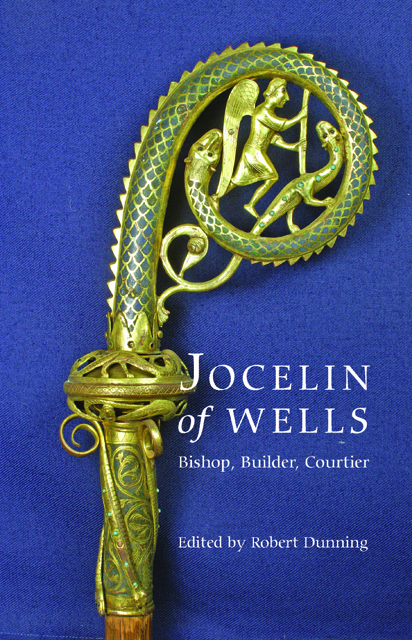3 - Jocelin of Wells and his cathedral chapter
Published online by Cambridge University Press: 02 March 2023
Summary
When I was invited to speak on Jocelin of Wells and his cathedral chapter at the 2006 conference on the bishop and his career, I accepted readily and with great pleasure. But later it occurred to me that it would have been more accurate to have entitled my lecture ‘Jocelin of Wells and his quasicathedral chapter’. For in Jocelin’s time the church of Wells was technically no longer, and not yet, a cathedral. It was existing in an interim, quasi, phase.
Historically the ancient minster of St Andrew at Wells had been made the mother church of the newly created see of Somerset in 909. But after a flowering of chapter life under Bishop Giso (who ruled from 1061 to 1088), Wells lost its cathedral status when Bishop John of Tours removed the episcopal throne to the abbey of Bath in c.1090. John demolished the cloister, refectory and dormitory which Giso had built for the canons of Wells. The canons were forced to return to the unreformed practice of living in houses in the town. Further, John impoverished the chapter by alienating a portion of its revenues to a layman, Hildebert, who was probably his brother. From 1090 until 1245, the sole cathedral of the see was not the church of Wells but the abbey church of Bath, and the monks of Bath, not the canons of Wells, formed the cathedral chapter.
As we know, eventually Wells did recover its cathedral status. In the process of recovery, the accession of Bishop Robert in 1136 was a turningpoint. From that time further decline was halted, and the church and its chapter began to be nurtured under active episcopal patronage. The constitution was developed in line with the customs of the greater Anglo-Norman cathedrals, such as Salisbury, Lincoln and York, and landed endowments and income were recovered, expanded and secured so as to support a growing and well-ordered community. As a result, the chapter’s sense of identity developed to the point where the canons were able to assert their right to participate, with the monks of Bath, in the episcopal election of 1173, when Bishop Reginald was elected, and again in 1206, at the election of Jocelin.
- Type
- Chapter
- Information
- Jocelin of WellsBishop, Builder, Courtier, pp. 53 - 66Publisher: Boydell & BrewerPrint publication year: 2010



